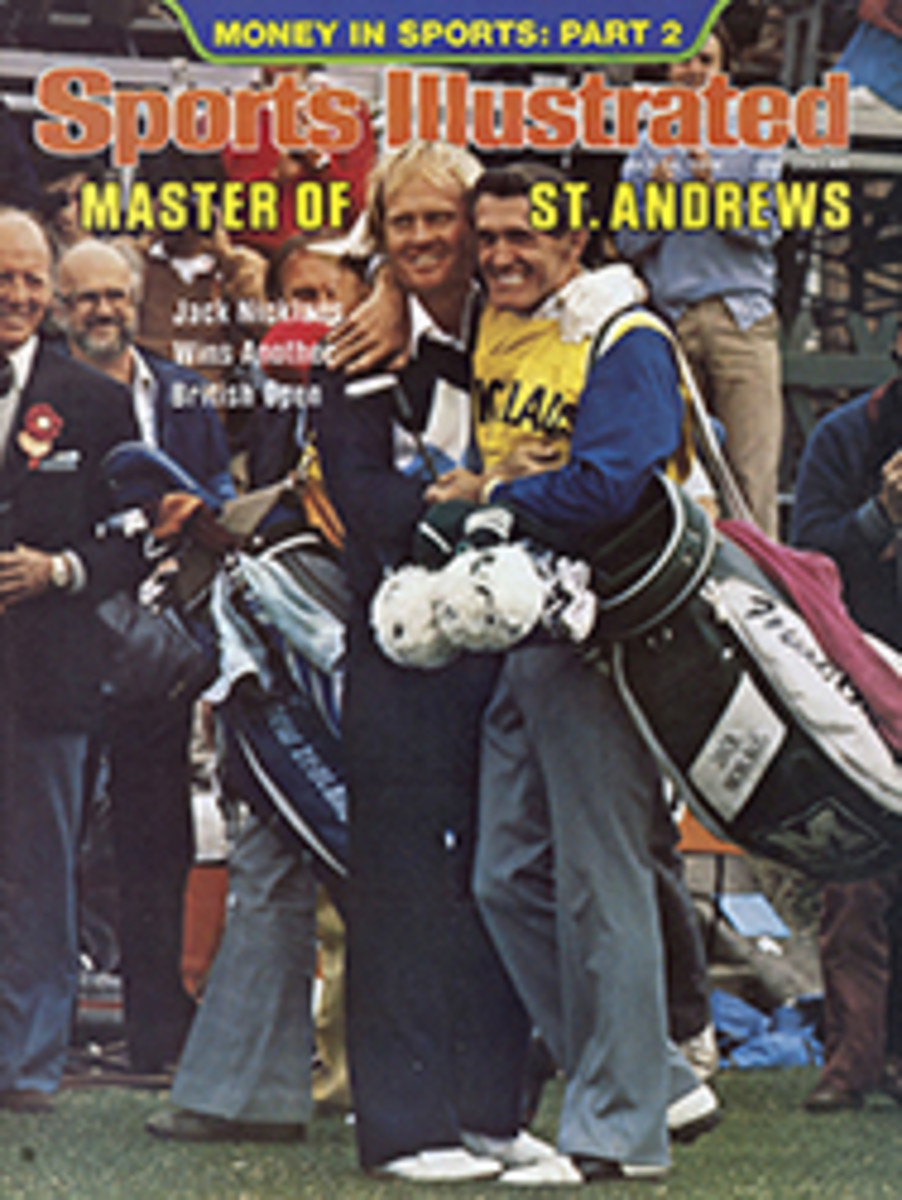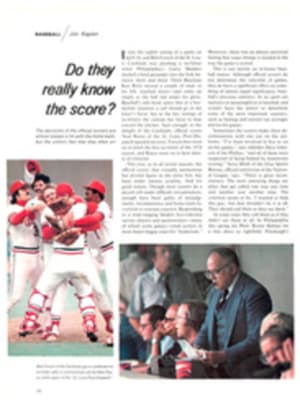
A COW WON'T CARE
They come in low over the Wisconsin farmlands, shaking the corn tassels with the roar of their engines. There are buzzing Stearmans, little Dyke Deltas, Pitts Specials and Pietenpols. Easy Risers hum along like mosquitoes. A 1911 Curtiss Pusher appears and is followed by an Os-prey amphibian and a Breezy, its framework bared like a flying skeleton. Behind a 1929 Ford Tri-Motor come the hundreds of more familiar Cessnas, Pipers and Beechcrafts, high wings, low wings, biplanes and gyrocopters. A Messer-schmitt 109 chases a lumbering B-17 and is, in turn, tailed closely by a flight of swift P-51s. And descending through the crowded sky comes a parachutist, a large American flag tied to one leg. He trails red smoke as he drifts down, while loudspeakers on the ground blare The Star-Spangled Banner.
It is fitting that this scene no longer sends farmers into a frenzy or dries up their cows. Man and beast are used to such activity around Oshkosh, home of Wittman Field and of the Experimental Aircraft Association's annual convention. The 1977 show was the 25th anniversary of the big fly-in, attracting 8,000 planes and 300,000 spectators for a week of air shows, flybys, workshops and entertainment. The session starting next week should be even bigger.
The thousands of airplane nuts spend most of their week right at the airfield, creating their own small town of campers and trailers, with the hardiest sleeping in tents pitched under the wings of their planes. By day they flock to work-shops on such subjects as propeller carving, engine overhaul, plane design and navigation. By night, they watch old flying movies, cheering James Stewart in Spirit of St. Louis, or simply sit around engaging in hangar talk. The EAA convention fits very well into its rural surroundings because much of aviation got its start down on the farm.
Take the 72-year-old Crites twins, Dale and Dean, who flew two of the most admired antique planes to the 1977 convention, a 1911 Curtiss Pusher and a 1928 Waco. The Criteses learned to fly in the mid-'20s on the family farm near Honey Creek, Wis. "We had about 250 or so pigeons flying around the barn all the time," says Dale, "and we used to sit around watching them and talk about how it would be to fly." To find out, the twins rebuilt a World War I Jenny and took off; the Jenny eventually ended up hung high in a tree, but the Criteses carried on. They've been patching, building and piloting airplanes ever since.
Dale flew his 1911 Curtiss the 70 miles to Oshkosh from his home in Waukesha. The flight drew a sigh from Al Kelch, a member of the board of directors of the association's antique and classic division. "Fourteen hours flying time used to be the average life span of men flying the Pusher," Kelch said. He tried to describe the flying characteristics of the Curtiss, an ungainly critter with a bamboo fuselage and a top speed of 65 mph, in which the ailerons are controlled by leaning to the left or right in the pilot's seat. "Why, it's worse than trying to pat your head and rub your stomach at the same time," he said.
Thousands of spectators wander along the rows of planes on display during the week—antiques (built before 1945), classics (1945-55), warbirds (almost all of World War II vintage), and homebuilts—stopping now and then to enthuse over a particular favorite, take a few snapshots and congratulate the owner. The warbird fliers are a colorful lot in their jumpsuits and leather jackets, and the antique owners in goggles, leather helmets and silk scarves cut dashing figures, but the home-built pilots are primarily noticeable because they are always around. For most of the convention they hover near their creations, constantly polishing surfaces, tinkering under the engine cowling, basking in the admiration of the passing crowd and answering an endless stream of questions. How long did it take to build? How much did it cost? How does she fly?
"If you build an airplane and fly it, it will affect your life more than anything else—except maybe getting married," says Burt Rutan, creator of the VariEze, the most widely admired design at Oshkosh. A graceful, if odd-looking craft, the VariEze might have flown to Wittman Field straight out of Star Wars. Hailed by some as the homebuilt design of the future, it is constructed of fiberglass over a shaped, rigid-foam core, a sharp departure from the more conventional metal or fabric skin over a skeleton frame. Designer Rutan claims the two-place plane can be completed by the average homebuilder in 1,000 hours at a cost of $4,000, plus the expense of the 100-hp Continental Engine, from $1,500 to $3,500. What perked up even greater interest was the promised maximum cruise speed of 195 mph, range of 800 miles and a 1,600 feet per minute rate of climb. And when three VariEzes took to the skies, banking, climbing and wheeling with the grace and agility of swallows, the crowd that lined the runway oohed and aahed with unabashed admiration.
By the end of last year's convention, more than 2,300 sets of VariEze plans had been ordered at $110 each, even though only 17 of the planes were known to be flying. How many of those thousands will ever get into the air? Probably only one in 10, according to the EAA. Building an airplane, whether a VariEze or a more conventional design, is an enormous undertaking and usually takes years to complete. "People lack the concentration necessary for a project of that size," said one homebuilder. "They don't have the stamina."
But try to tell that to the weekend flier who has just seen his dream machine and is already mentally measuring the garage or basement back home to see if the 22-foot wingspan could possibly fit in. After all, the designer points out that it's just like constructing a model airplane, only bigger. Maybe the would-be builder still has a few nagging reservations: Can he afford it? Does he really have the time? And last, but not least, what will his wife say? Just then, a yellow, orange and red Starduster Too flashes by, does a couple of loops and a snap roll and disappears into a bank of white clouds over Oshkosh. All doubts vanish. Another homebuilt airplane is on the way.

